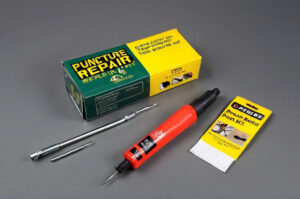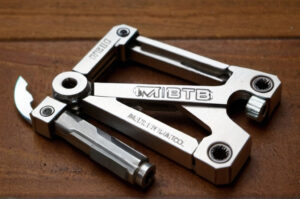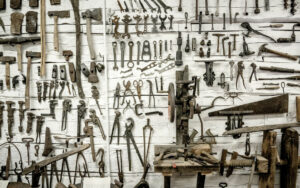Table of Contents
Introduction to MTB Multi-tools: Essential Gear for Every Mountain Biker
If you are a mountain biking enthusiast, a multi-tool is indispensable. When you’re out on the trail, being prepared for unforeseen mechanical issues makes a world of difference. A multi-tool offers the versatility and compactness needed to handle various repairs without weighing you down. These tools combine multiple functions into a single, lightweight package, ensuring you’re always prepared for unexpected situations.
The versatility of a multi-tool cannot be overstated. From tightening screws and bolts to adjusting brakes and derailleurs, having the right tool at your disposal can transform a potentially disastrous ride into a manageable inconvenience. Additionally, the compact size means it fits easily into your backpack or saddlebag, adding minimal weight to your gear.
Ensuring you’re prepared for trail-side repairs not only makes your rides safer but also boosts your confidence. There’s a long history of multi-tools in cycling, dating back to early innovations that aimed to provide cyclists with portable solutions for common mechanical issues. Today’s multi-tools are the result of years of refinement and technological advancements, making them more efficient and reliable than ever before.
Key Features to Look for in a Multi-tool
When selecting the best compact bike multi-tool for your needs, consider its size and weight. A lightweight multi-tool is essential for maintaining bike agility and comfort, especially on long rides. Opt for tools that pack the most essential functions into the smallest package without compromising usability.
Durability and build quality are equally important. A well-constructed multi-tool can withstand the rigors of trail riding and last for years. Look for materials like high-grade steel, aluminum, or titanium, known for their strength and resistance to wear and tear.
The variety of tools included is also crucial. At a minimum, your multi-tool should feature hex keys, screwdrivers, and a chain breaker. Additional tools like tire levers or spoke wrenches can offer extra functionality. However, you should balance the number of tools with the multi-tool’s weight and size to ensure it remains practical.
Ease of use and ergonomic design are vital to ensuring that the tool can be effectively utilized on the trail. Tools that are easy to deploy and comfortable to handle make repairs quicker and less frustrating. Finally, ensure the multi-tool is compatible with the components on your bike. There’s no use having a tool that doesn’t fit your bike’s specific screws and bolts.
Top Recommended Multi-tools for Mountain Biking
Several multi-tools stand out in the market for their exceptional blend of features, durability, and portability. Brands like Crankbrothers, Topeak, and Lezyne offer flagship models that cater specifically to mountain biking needs.
One standout option is the Crankbrothers M19. It’s renowned for its robust build quality and includes 19 essential tools. Users appreciate its compact size and sturdy construction, although some find it a bit heavy for ultra-lightweight setups.
Topeak’s Mini 20 Pro is another highly recommended model. It combines 20 tools in a sleek, lightweight frame. Notable features include a chain tool and various wrench sizes, making it a comprehensive choice for trail repairs. Users often praise its ergonomic design and ease of use, but note that it’s on the pricier side.
The Lezyne V10 stands out for its minimalist approach while still offering key features like a chain breaker and multiple hex sizes. It’s crafted from high-quality materials and is exceptionally lightweight, though it may lack some of the additional tools found in more loaded options.
Real-world performance and user reviews highlight the M19, Mini 20 Pro, and V10 as reliable companions on the trail. Each has its pros and cons, but all deliver solid performance, ensuring you’re prepared for most common repairs.
Comparing Multi-tool Materials: Aluminum vs. Steel vs. Titanium
Weight is a critical consideration when choosing a lightweight MTB tool. Aluminum, steel, and titanium are the primary materials used in multi-tools, each with distinct weight characteristics. Aluminum is the lightest, making it perfect for those prioritizing portability. However, it’s less durable than steel and titanium.
Steel, while heavier, offers superior durability and strength. It’s a reliable choice for bikers who may encounter frequent tough repairs or need a tool that can withstand significant wear and tear. Titanium strikes a balance with its light weight and exceptional strength, but it tends to be more expensive.
Cost is another important implication of material choice. Aluminum tools are often the most affordable, while titanium ones come with a premium price tag due to their blend of lightweight and durability. Steel tools fall somewhere in between. Your choice of material should align with your biking conditions and budget.
For specific biking scenarios, aluminum tools are ideal for short, casual rides where weight is a concern. Steel tools are better suited for rugged, long-distance journeys where durability is paramount. Titanium tools offer the best of both worlds, making them suitable for a range of biking activities.
Multi-tool Maintenance Tips
To ensure your multi-tool remains functional and reliable, regular maintenance is necessary. Cleaning and lubricating the tool prevents rust and keeps the moving parts operating smoothly. Use a mild cleaner and a small brush to remove dirt and debris, then apply a light lubricant to the pivots and hinges.
Proper storage can also extend the life of your tool. Keep it in a dry place to avoid moisture-related damage. Many bikers store their tools in a small pouch within their bike bag, protecting it from the elements.
Regularly check your multi-tool for wear and tear. Inspect each tool for signs of damage or wear that could compromise its effectiveness. By replacing parts as needed, you can ensure the tool’s longevity.
Maintaining functionality is crucial, especially for tools you rely on during emergencies. Make a habit of inspecting your multi-tool before and after rides, ensuring everyone’s safety and preparedness on the trail.
DIY Trail Repairs: Common Fixes with Your Multi-tool
Knowing how to perform common trail repairs can save your ride. A broken chain can be fixed using the chain breaker on your multi-tool. Remove the damaged links, reattach the chain, and you’re back in business.
Adjusting your brakes and derailleurs is another frequent trail-side repair. Use the appropriate hex or Torx keys to tweak these components, ensuring optimal performance. This adjustment can make a significant difference in your ride’s safety and comfort.
Tightening bolts and screws is a simple but crucial task often needed during rides. Your multi-tool should have the necessary sizes to fit your bike’s components, ensuring nothing falls out of place when tackling rough trails.
Emergency tire repairs, such as fixing a flat, can also be managed with the right tools. Some multi-tools include tire levers for this purpose. Keep a patch kit or spare tube handy, and you can handle most tire issues without a hitch.
Conclusion: Investing in a Quality Multi-tool
A quality multi-tool is an investment in your safety and peace of mind on the trail. The best compact bike multi-tool combines essential functions in a lightweight, durable design, ensuring you’re well-prepared for common repairs.
While it may be tempting to choose the cheapest option, investing in a high-quality tool pays off in reliability and longevity. Quality multi-tools stand up to the demands of mountain biking, providing consistent performance when you need it most.
In conclusion, a reliable multi-tool enhances readiness and confidence, allowing you to tackle any mechanical issues that may arise on your mountain biking adventures. Choose wisely, and you’ll find yourself enjoying the trails with greater assurance.
“`







